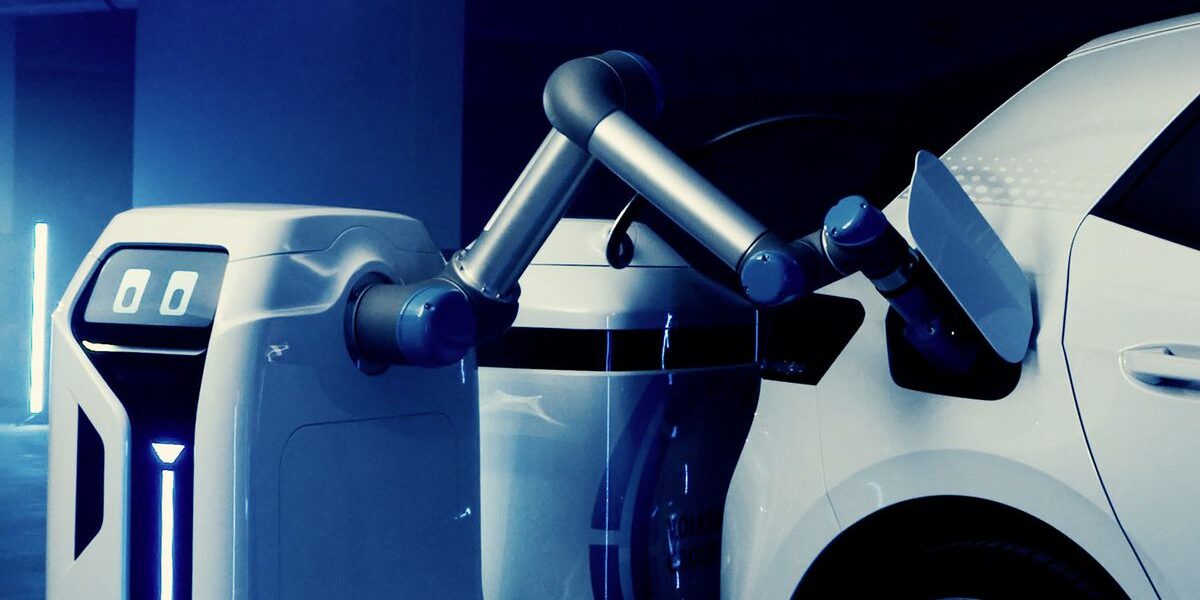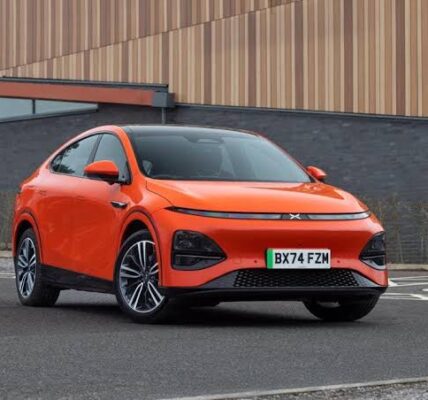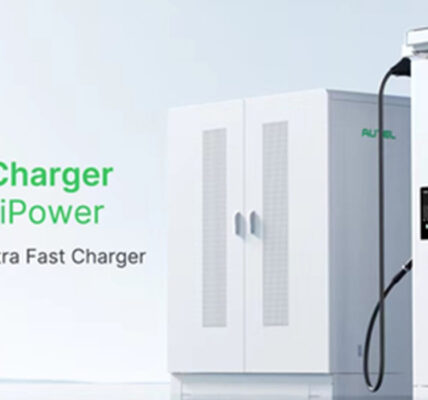Volkswagen says it’s made a prototype of the electric vehicle charging robot concept it first showed off in proof-of-concept form in late 2019, and that it plans to keep developing the idea. The giant German automaker apparently liked the concept so much that the prototype charging robot looks almost identical to the concept version, complete with blinking digital eyes and R2-D2 noises.
The robot — which, shockingly for Volkswagen, doesn’t have a garish or cutesy name — works simply enough in theory. When you park your electric vehicle in a parking garage, you (or your car) can request to have the battery topped up. The robot unmoors from its docking station, hooks up to one of a dozen or so mobile batteries, which it then drags to your car. The robot plugs the battery in to your car and then returns to its station, ready to field any other charging requests. When your car is done charging (or you return from your errand), the robot collects the battery and brings it back to the charging racks, stopping to let other cars and pedestrians pass by along the way.
It’s a fun idea, though there are a number of possible points of failure that Volkswagen didn’t address in the press release issued recently. For one, the charging robot depends on cars being connected to an overall network of some kind (known in the industry as V2X, or “vehicle to everything”) in order to communicate with the robot. But that’s an idea that has yet to take hold, and one that is fraught with unglamorous but nevertheless foundational problems, like arguing about which standard to use.
Also, calling this version of the charging robot a “prototype” implies that Volkswagen has got a working version, but the company didn’t actually show it in action as part of the announcement. Instead, Volkswagen merely released a “first glimpse,” involving just a glossy commercial for the robot and a few photos. Automated charging is an idea that Volkswagen has been toying with for a little while, and while it’s certainly not alone, it’s one of the few big companies that seems to be actively engaged in making it happen.
Volkswagen is already building out large fast-charging networks in the US (Electrify America) and Europe (Ionity) as part of its larger atonement for the Dieselgate scandal. Something like this robot, then, might seem like a more complementary charging solution. But fast-charging networks are not really meant for routine use; rather, most electric car owners will do the bulk of their charging at home or in parking structures. So finding a way to make that easier is a worthy goal.
The charging robot likely won’t be the ultimate solution there, either, even if it winds up working well. Volkswagen is already trialing a different idea in parts of China and in its home city of Wolfsburg, Germany, that involves putting batteries inside what looks like a more standard charging station pillar. This allows the charging station to build up a store of energy that can be used to fast-charge electric vehicles, even if the local grid isn’t otherwise capable of doling out that much electricity in one go.
Volkswagen said that it is planning a wider launch of these so-called “flexible quick-charging stations” in early 2021. One downside to these stations, though: no blinking eyes.






